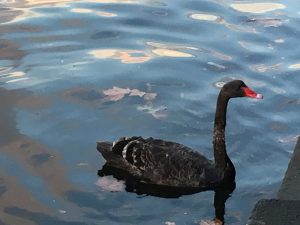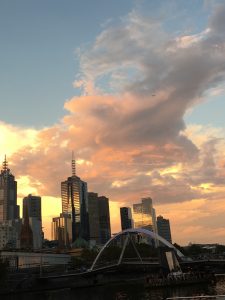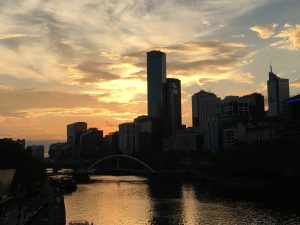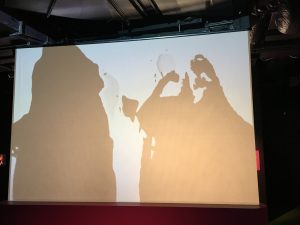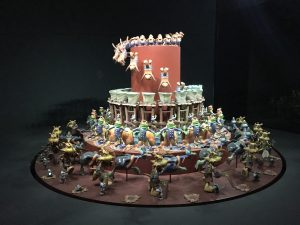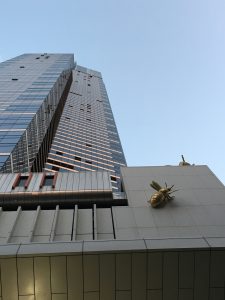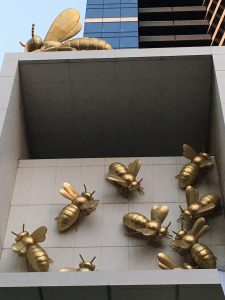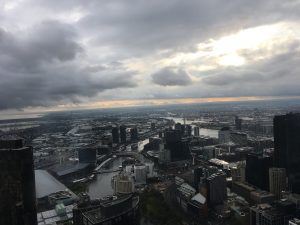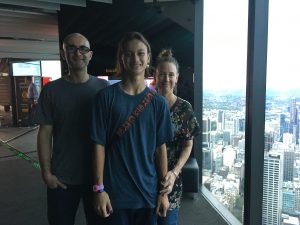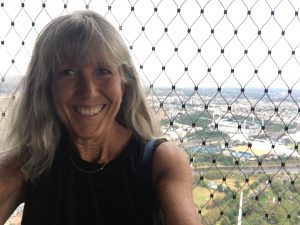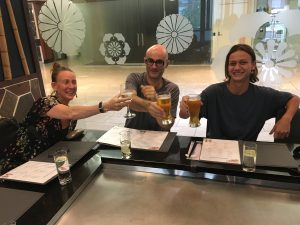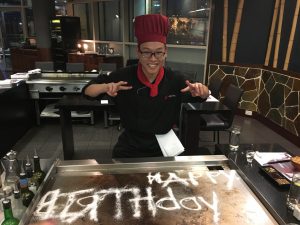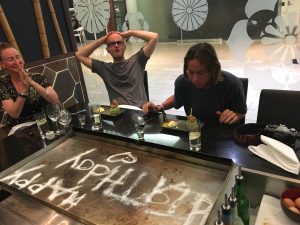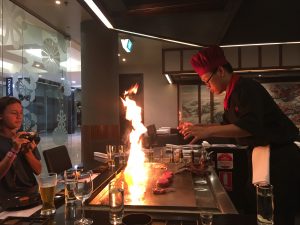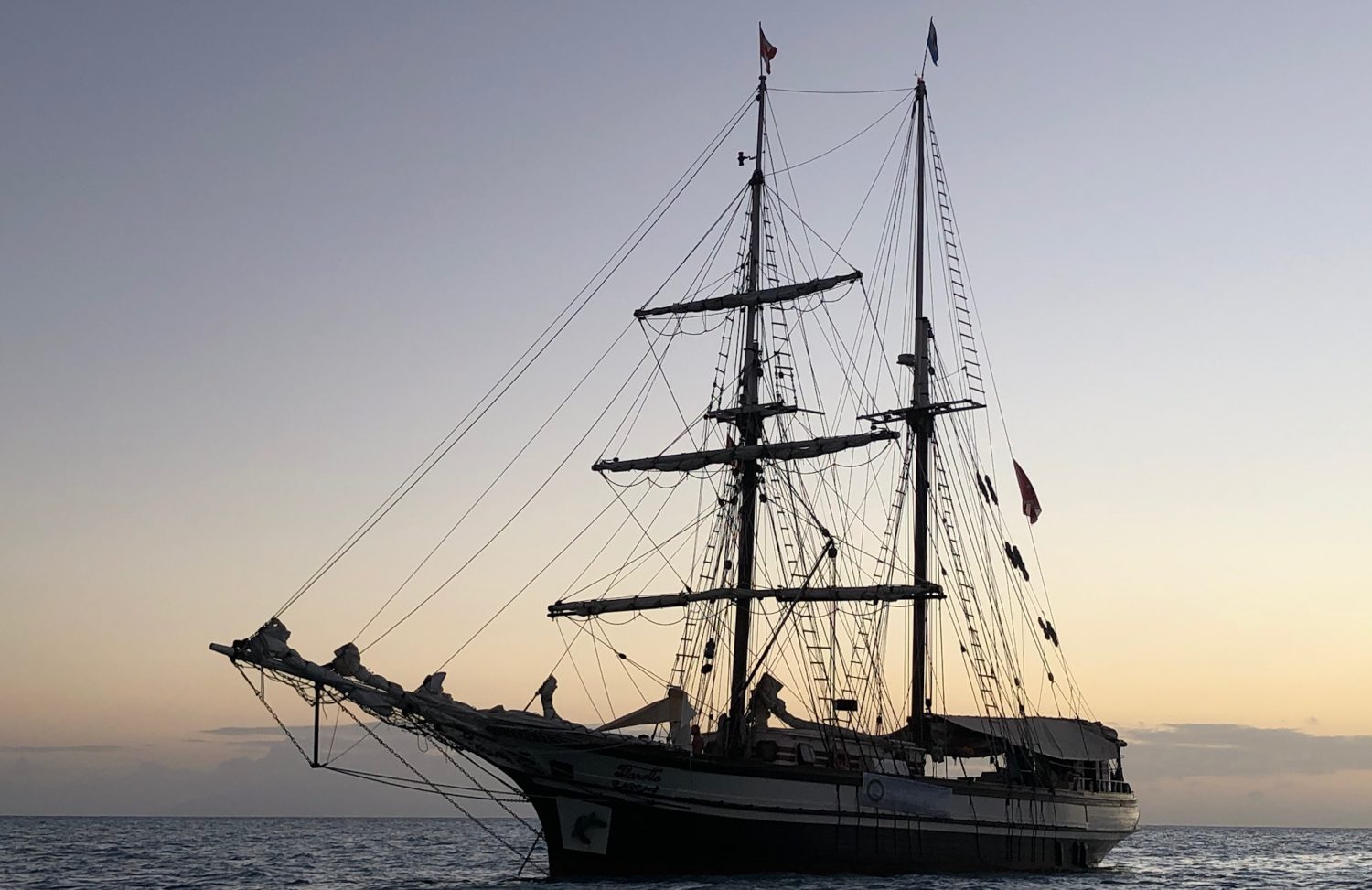Melbourne is known for the strange weather — they say it’s possible to experience all four seasons in one day. I’m pretty sure that’s an Aussie exaggeration, but I will admit that the forecasts haven’t been very right, and that it’s changed pretty rapidly each of the last 3 days. But each day had some rain, so activities were curtailed, and strolls through gardens weren’t on the plan. But laundry and some errands filled in the time between other activities.
Here’s what I saw that was new and interesting: the shopping malls. Unlike many in America with huge parking lots and large footprints, you wouldn’t know from the street level what is hidden behind the door. And once inside, there are masses of shops and kiosks and food halls and floors and floors of stuff to buy. And one shopping center seems to blend into the next, crossing the road into another. And it was packed on a midday during the week. Lots of young people, so perhaps off from class from the nearby universities, but I was surprised by all the activity.
The Australian Center for the Moving Image is a fascinating museum highlighting not only the history of filmmaking, but also Australia’s participation and role in the multi-media world which began over 100 years ago. It is an interactive an immersive exhibition which brought together rare footage, fascinating objects and interviews with people involved in the field — cinematographers, actors, directors, screenwriters, editors. I’m sure it was much like others of the same ilk in the U.S., which of course would have an even greater library and history, so what I found most interesting were the exhibits about capturing the aboriginals’ stories on film and the political and cultural implications involved.
For my nephew Sean’s 18th birthday we went to the top of the Eureka Tower to the Skydeck 88, the highest viewing platform in the southern hemisphere. A elevator takes you to the top in under 40 seconds and then you are 975 feet above the city with panoramic views across Melbourne.
Eureka Tower is named after the Eureka Stockade, a rebellion during the Victorian gold rush in 1854. It was staged near Ballarat, a town that we went through on our trip to the Grampians, and was a rebellion against a government tax that was applied to any miner digging for gold whether or not he found any. So the government sent soldiers, a miner was killed and the soldier acquitted, and the miners burned that spot, created a new flag and pledged allegiance to it, and then built a stockade against the soldiers who attacked. Because most people agreed with the miners, they too were acquitted and the tax revised. This has been incorporated into the design, with the building’s gold crown representing the gold rush and a red stripe representing the blood spilt during the revolt. The blue glass cladding that covers most of the building represents the blue background of the stockade’s flag and the white lines also represent the Eureka Stockade flag. The white horizontal stripes also represent markings on a surveyor’s measuring staff. At the base of the tower is an art installation containing bees inside a white box, resembling a manmade beehive. There are two regular sized bees outside the box, and one queen bee on the top. The gold color of the bees complements the gold at the top of the tower.
The clouds had rolled in so it wasn’t the prettiest of views, but it was still spectacular to see the city laid out below. Then we went to dinner for teppanaki, because who doesn’t enjoy watching those chefs make magic right in front of you? And sake is always a good thing.
More rain and chill in the air today, so no big news or visits to anyplace fascinating. But tune back in aftert tomorrow — big biking trip planned for the Yarra Valley.
